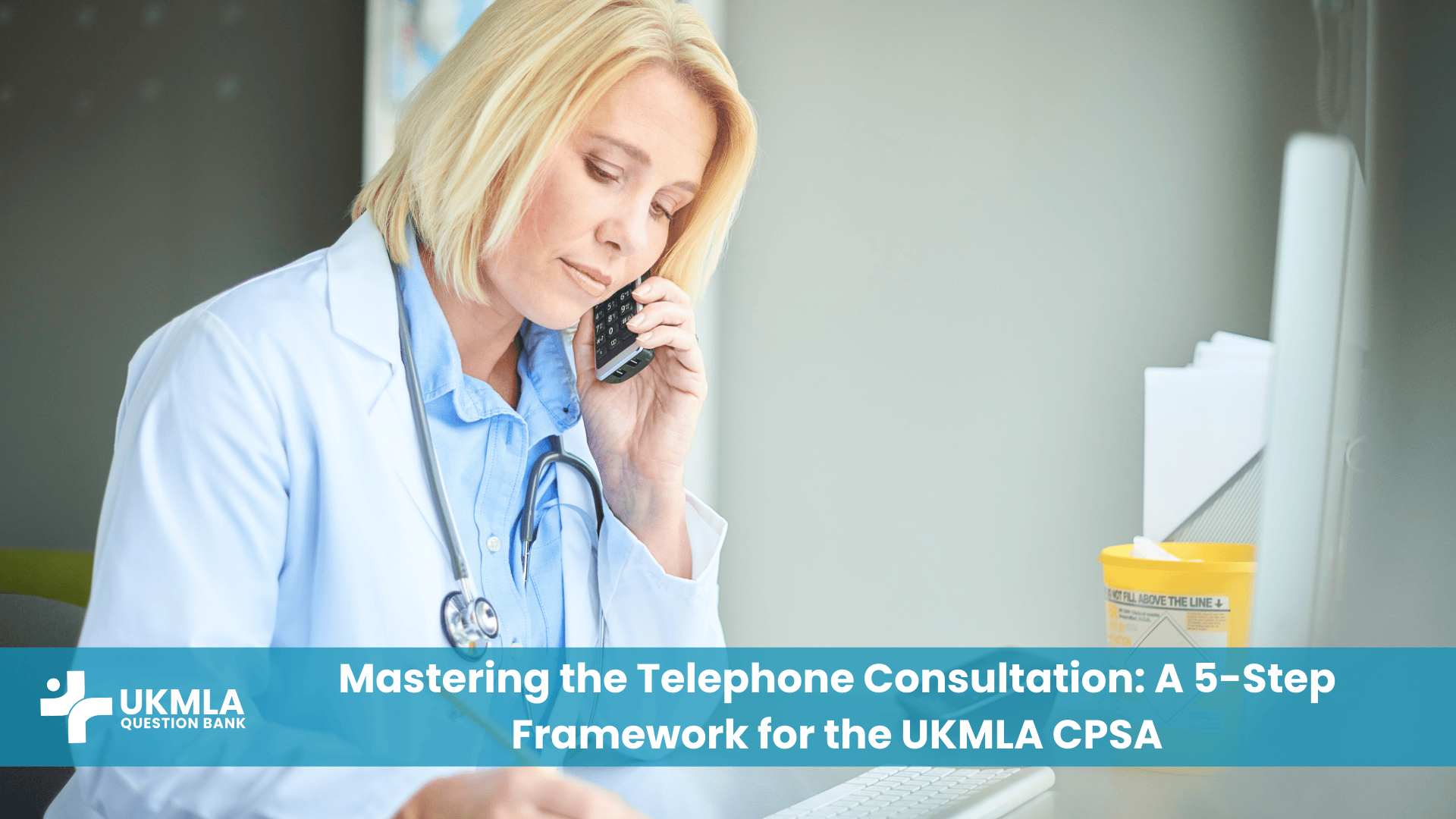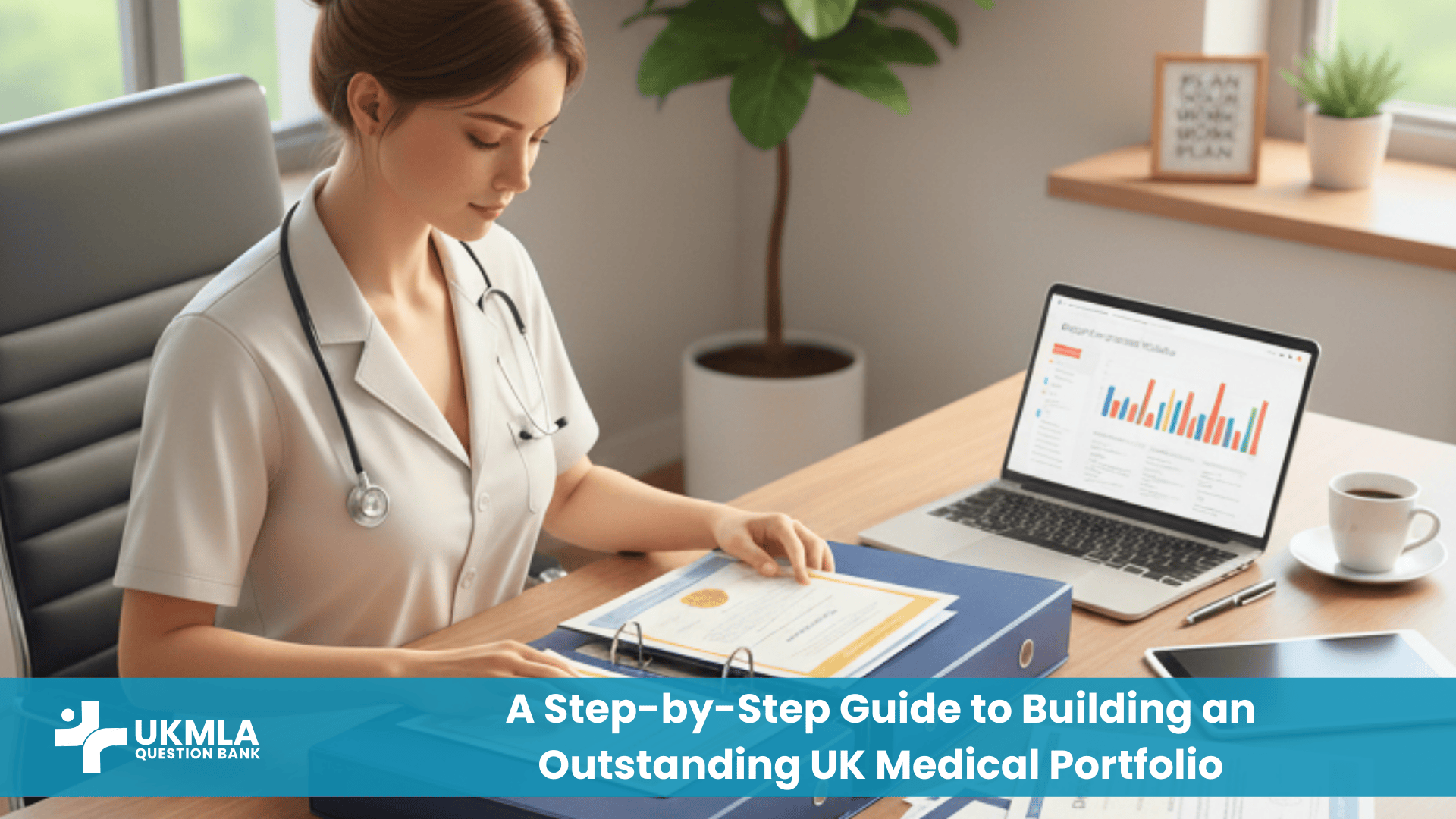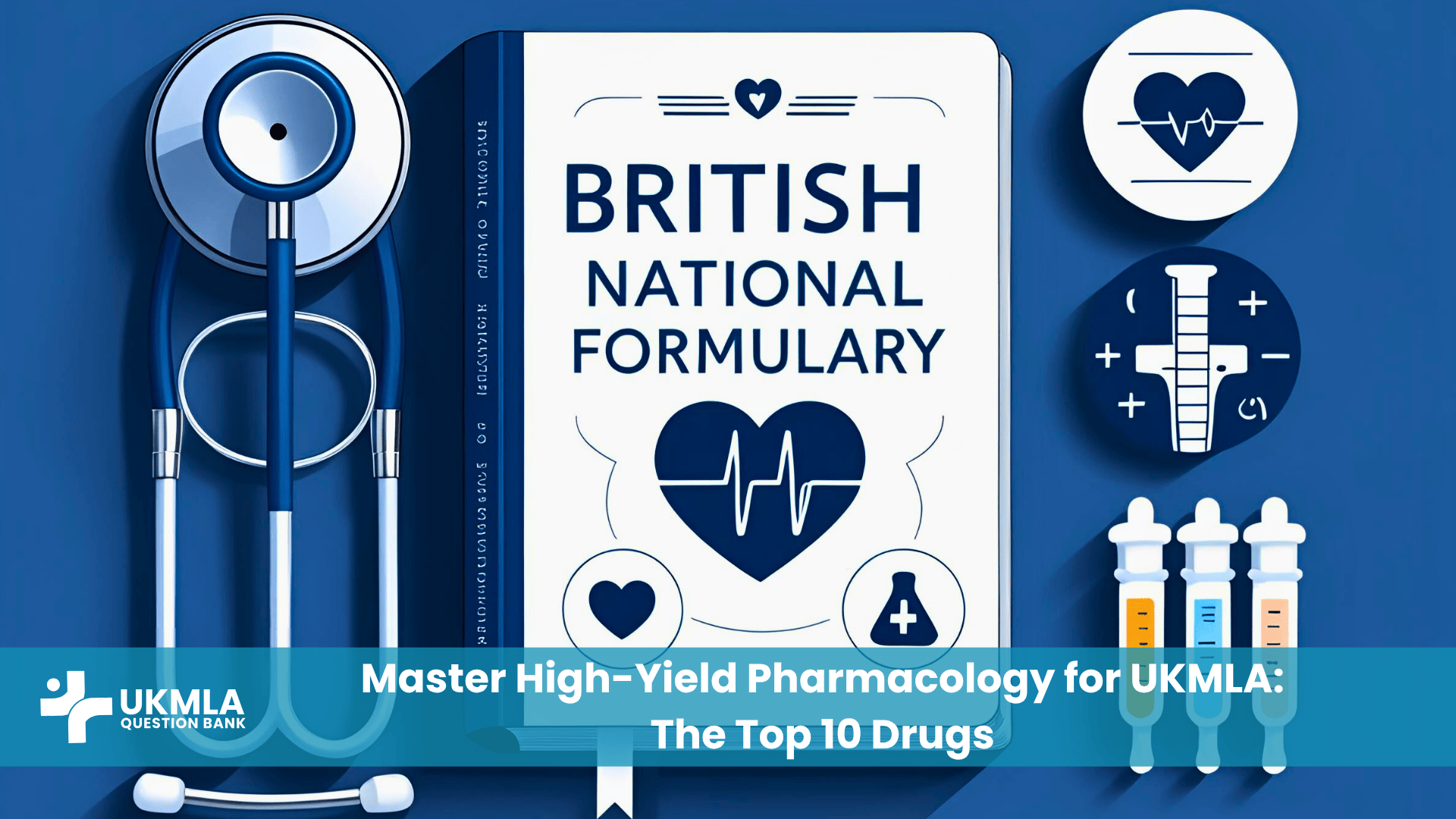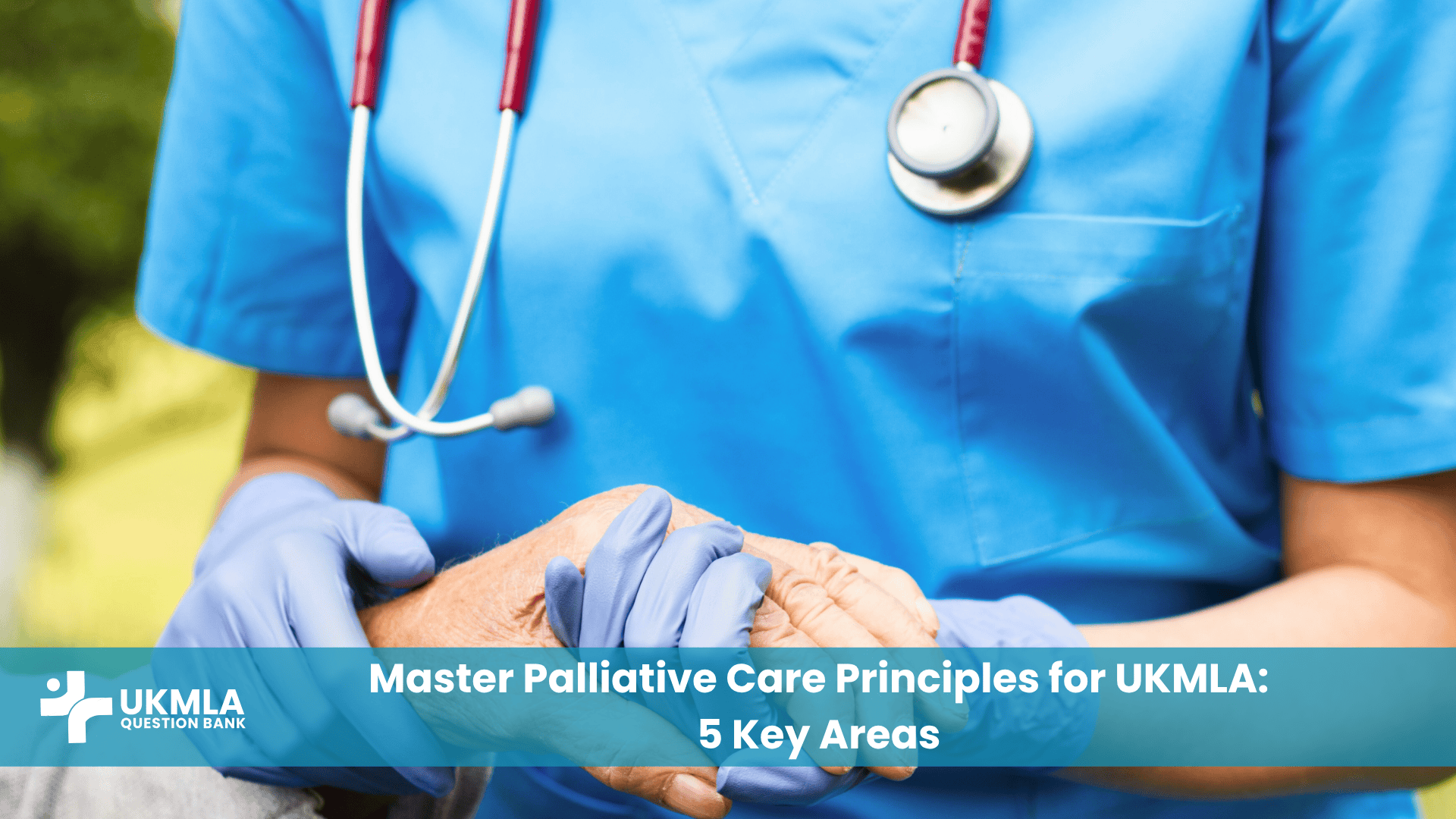Introduction
Learning how to manage a phone consultation CPSA stations require is no longer a niche skill but a core competency for the modern junior doctor. The rise of telemedicine has fundamentally changed the landscape of the NHS, and the UKMLA has evolved to reflect this reality. The telephone consultation station is designed to test your ability to gather information, build rapport, and make safe clinical decisions without the benefit of visual cues. It’s a unique challenge that assesses your communication skills, clinical reasoning, and, most importantly, your commitment to patient safety in a remote setting.
While it can seem daunting, this station is an excellent opportunity to demonstrate your proficiency as a clear, structured, and safe clinician. This comprehensive guide will provide you with a robust, 5-step framework to navigate the telephone consultation with confidence. We will break down the unique challenges of remote assessment and provide a step-by-step structure covering everything from the initial introduction to the final, critical safety net. By mastering this framework, you will be well-equipped to excel in this increasingly important UKMLA scenario.
Table of Contents
ToggleThe Unique Challenges of a Phone Consultation
Before diving into the framework, it’s vital to appreciate why this station is different. Understanding the inherent challenges allows you to actively compensate for them throughout the consultation.
Building Rapport Without Visual Cues
In a face-to-face meeting, so much of our communication is non-verbal. We use eye contact, facial expressions, and body language to convey empathy and build trust. Over the phone, all of this is lost. Your only tools are your words and your vocal tone. It becomes much harder to gauge a patient’s emotional state or build the rapport necessary for a successful consultation. To overcome this, you must become a more active listener, using techniques like summarising and reflecting to show you are engaged. Your tone of voice—warm, calm, and professional—is paramount. For more on this, see our guide to communication nuance for IMGs.
The Limitations of a Remote Assessment
The most obvious challenge is the inability to perform a physical examination. You cannot see if a patient is pale, sweaty, or in respiratory distress. You cannot palpate an abdomen, listen to a chest, or check a pulse. This significantly increases the clinical risk. You are completely reliant on the patient’s ability to describe their symptoms, which may be unreliable. This is why a highly structured approach to history taking and an almost obsessive focus on risk assessment and red flags are non-negotiable in a telephone consultation.
Blockquote: As the General Medical Council’s guidance on Remote Consultations states, “You must… consider the limitations of the technology you’re using and take appropriate steps to manage any risks to patient safety.” Recognising and mitigating these risks is the central task of this station.
How to Manage a Phone Consultation CPSA: A 5-Step Framework
This structured, 5-step approach ensures you cover all the essential domains in a logical, time-efficient, and safe manner.
Table 1: The 5-Step Phone Consultation Framework
| Step | Goal | Key Actions |
|---|---|---|
| 1. Introduction | Establish a professional and safe environment. | State name/role, confirm patient identity, gain consent, set agenda. |
| 2. History Taking | Gather structured, relevant clinical information. | Use a clear framework (e.g., SOCRATES), actively listen, signpost. |
| 3. Risk Assessment | Actively screen for serious pathology. | Explicitly ask about relevant red flag symptoms. |
| 4. Management Plan | Formulate and agree on a safe, patient-centred plan. | Summarise findings, explain the plan clearly, use ICE, check understanding. |
| 5. Safety Netting | Ensure the patient knows what to do if things change. | Provide specific, unambiguous “what if” instructions and confirm the plan. |
Step 1: The Golden Minute – Introduction and Rapport
The first 60 seconds of the call set the tone for the entire consultation.
Introductions: Start clearly. “Hello, my name is Dr. [Your Name], I’m one of the junior doctors at [Clinic/Hospital]. Am I speaking with [Patient’s Name]?” Confirm their date of birth.
Consent & Confidentiality: Be explicit. “Is now a good time to talk, and are you happy to have this consultation over the phone?”
Agenda Setting: Outline the call. “I understand you’ve called today about [symptom]. I’d like to ask you a few questions about that, and then we can come up with a plan together. Does that sound okay?”
Step 2: Structured History Taking
Without an exam, your history has to do all the heavy lifting. Structure is your best friend. Follow a clear guide, like our one on history taking in the CPSA.
Use a Framework: For a pain history, use SOCRATES. For any presenting complaint, explore it fully before moving on.
Actively Listen: You can’t nod or show you’re listening with your eyes, so you must do it with your voice. Use phrases like, “Okay, so you’re saying the pain is a sharp feeling on the right side, I understand.”
Signpost Clearly: Guide the patient through the consultation. “Thank you for telling me about that. Now I’m going to ask some more general questions about your health.”
Step 3: Focused Risk Assessment and Red Flags
This is where you demonstrate safety. You must actively hunt for red flags; do not wait for the patient to volunteer them.
Be Specific: Don’t just ask, “Anything else worrying you?” Ask targeted questions based on the presentation. For a headache: “Have you had any changes to your vision, any weakness in your arms or legs, or any fever?”
Acknowledge Limitations: It’s good practice to show the examiner you understand the risks. “Because I can’t see you in person, I need to ask some very specific questions to make sure we’re not missing anything serious.” This is a key skill covered in our guide to mastering red flag symptoms.
Step 4: Formulating and Communicating a Management Plan
After gathering information, synthesise it into a safe plan.
Summarise and Share: Start by summarising the patient’s story. “From what you’ve told me, it sounds like you have…” This shows you were listening and allows the patient to correct you.
Explain Clearly: Propose a plan in simple, jargon-free language. “Based on this, I think the safest thing to do is for you to come in for a face-to-face assessment today. I’ve booked you an appointment for 3 PM.”
Use ICE: Check for the patient’s Ideas, Concerns, and Expectations. “Did you have any thoughts on what might be causing this?” or “What were you hoping we could do for you today?”
Step 5: Effective Safety Netting and Closing the Call
This is arguably the most important step for demonstrating safety.
Be Specific and Action-Oriented: Vague advice like “call back if you feel worse” is inadequate. Be concrete. “If the headache becomes the worst you’ve ever had, or if you develop a new fever or neck stiffness, you must call 999 immediately. Do you understand?”
Confirm Understanding: Ask the patient to repeat the plan back to you. “Just to be sure we’re on the same page, could you tell me what the plan is if things change?”
Close Professionally: “Thank you for your time. Please don’t hesitate to call back if you have any of those specific symptoms we discussed. Goodbye.”
Common Pitfalls and How to Avoid Them
Being aware of common mistakes is the first step to avoiding them.
Making Assumptions Without Visuals: The patient might say they feel “fine” but could be in significant distress. Solution: Ask probing questions. “You say you feel fine, but on a scale of 1 to 10, how bad is the pain right now?”
Poor Time Management: Getting lost in the history and rushing the management and safety netting stages is a classic error. Solution: Be disciplined with your structure. Keep an eye on the clock and ensure you leave at least 2-3 minutes at the end for your plan and safety net.
Vague or Inadequate Safety Netting: This is a major red flag for the examiner. Solution: Always give specific, quantifiable symptoms or signs that should trigger a specific action (e.g., call 999, call the clinic, see a pharmacist). Avoiding these is a key way to prevent common UKMLA mistakes.
Frequently Asked Questions (FAQ) about the Phone Consultation Station
You must establish consent to speak in front of them. “I can hear there’s someone else with you. Are you happy for them to be present for this medical consultation?”
Acknowledge it immediately. “The line is quite poor, I’m struggling to hear you clearly. Let’s try our best, but if it cuts out, I will call you straight back.” If it’s too poor to be safe, you must state that and arrange an alternative.
Explain your reasoning clearly and safely. “I understand you were hoping for antibiotics, but based on your symptoms, a viral infection is more likely, and antibiotics won’t help. The safest plan is [alternative plan].”
Use your words and tone. Acknowledge the patient’s feelings explicitly. “That sounds like a very difficult and painful experience.” A short, empathetic pause can also be very powerful.
Having a mental framework or structure is essential. Reading from a rigid script is not. The examiner wants to see a natural, patient-centred conversation, not a robotic recitation.
You must be direct and clear. “From what you are describing, I am concerned this could be something serious that needs to be checked out in hospital immediately. I am going to advise you to call 999 or for me to arrange an ambulance for you now.”
Use polite interruption and signposting. “That’s very helpful information. To make sure I cover everything, I’d like to ask a few specific questions now, if that’s okay?”
In the CPSA, you may be asked to summarise your findings or write in the notes. Verbally state, “I would now be documenting this consultation thoroughly in the patient’s records.”
You will be speaking to a parent or guardian. The principles are the same, but your history questions will be adapted (e.g., asking about feeding, wet nappies, and behaviour).
The threshold should be low. If you have any clinical uncertainty after the call or if an examination is required to rule out serious pathology (e.g., to check for abdominal tenderness), a face-to-face review is the safest option.
Conclusion
Excelling in the telephone consultation station is not about having all the answers; it’s about being structured, communicative, and demonstrably safe. By internalising the 5-step framework—Introduction, History, Risk Assessment, Management, and Safety Netting—you create a reliable process that ensures you cover all the critical aspects of a remote consultation, even under the pressure of an exam. This structure is your safety net, preventing you from missing vital information and allowing you to focus on the patient.
Remember, the examiner is looking for a junior doctor who can be trusted to handle the ambiguities of modern medicine. They want to see that you recognise the limitations of telemedicine and that your priority is always patient safety. Practice this framework until it becomes second nature, and you will be able to show them that you are exactly that kind of doctor. Perfecting this skill is a key step towards mastering your CPSA mock stations.



